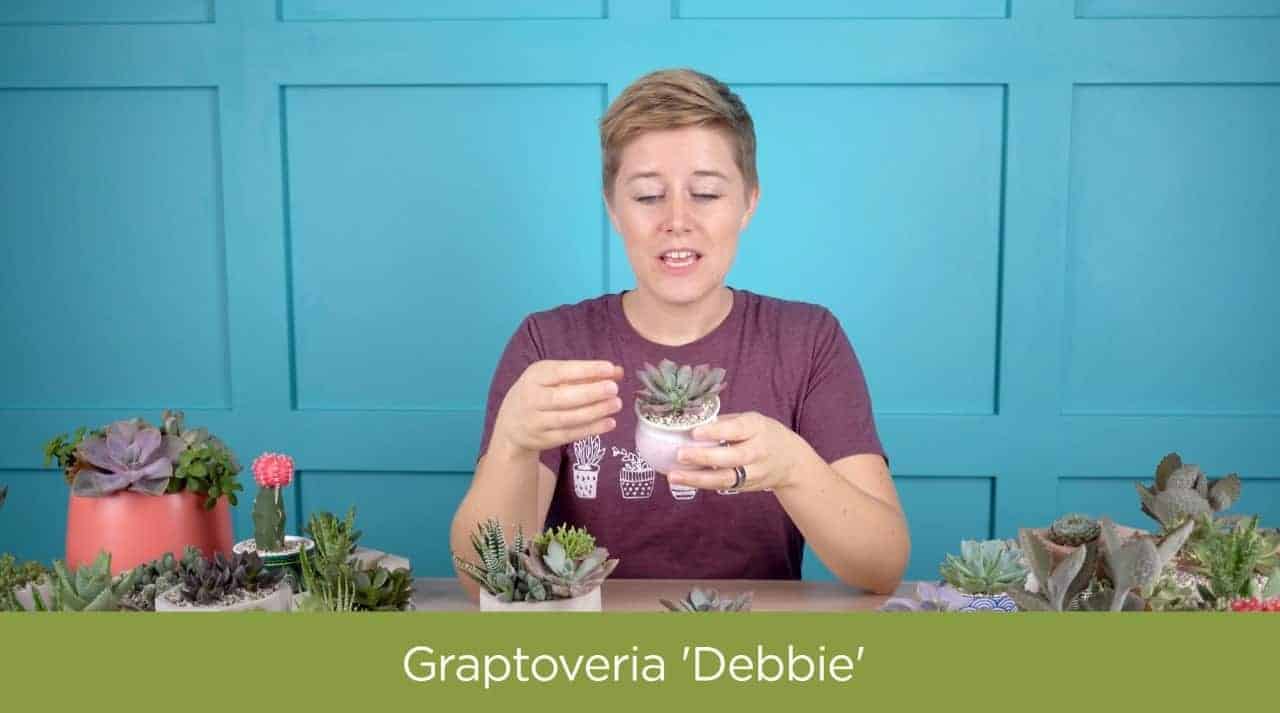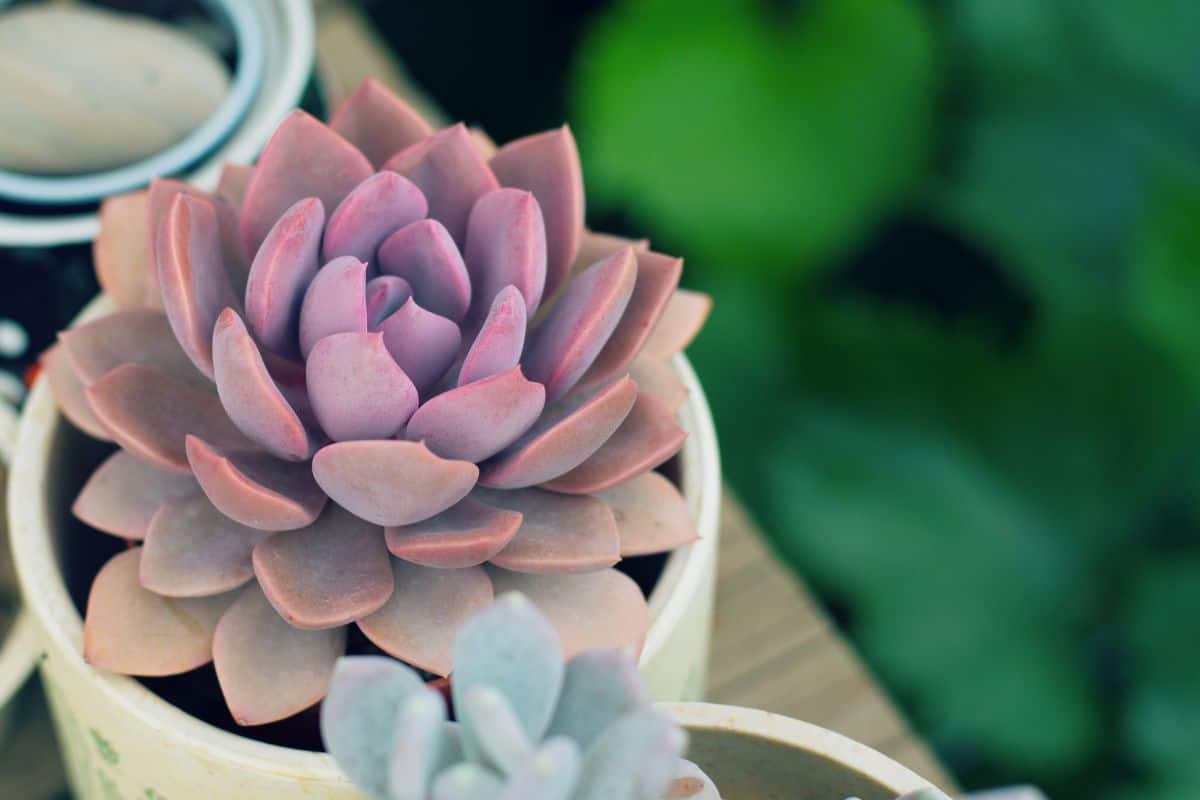
Graptoveria ‘Debbi’ is a unique succulent hybrid recognizable by its delicate colors and lovely rosette shape. It is a hybrid between Graptopetalum amethystinum and an unknown species of Echeveria. It is named after Debbi Foster. This species is also sometimes known as Graptoveria ‘Debbie’.
If you’re looking for a beautiful, compact hybrid succulent, look no further than Graptoveria ‘Debbi’. This succulent is as easy to care for as it is pretty. It’s a great addition to any succulent collection and can be cared for by gardeners of any experience level. It’s also non-toxic to pets.
Jump to:
Graptoveria ‘Debbi’ Appearance
| Name: | Graptoveria ‘Debbi’ |
| Soil: | Well-draining soil |
| Blooming: | Spring |
| Light: | Bright light |
| Water: | Once the soil is dry to the touch |
| Propagation: | Stem cuttings, offsets and seeds. |
Graptoveria ‘Debbi’ is a spectacular rosette-shaped succulent that tends to form dense clumps. The leaves of the rosette are fleshy and lanceolate in shape. New leaves tend to be a frosty pink color, while older leaves are a frosty green.
The frosty effect of the leaves is caused by a waxy layer of epicuticular wax, which helps protect the plant from the drying effects of the hot sun. It also limits the plant’s ability to lose moisture through its leaves.
Graptoveria ‘Debbi’ typically reaches about 8 inches in diameter at maturity. It is a relatively slow-growing plant, so it’s a great choice for gardeners with limited space available.
The unique color of the leaves tends to become more intense during cooler weather and may bleach out some during hotter months of the year. In the summer, this plant may also take on orangish hues. In the spring, delicate apricot-colored flowers appear from the center of the plant.
Hybrids & Cultivars
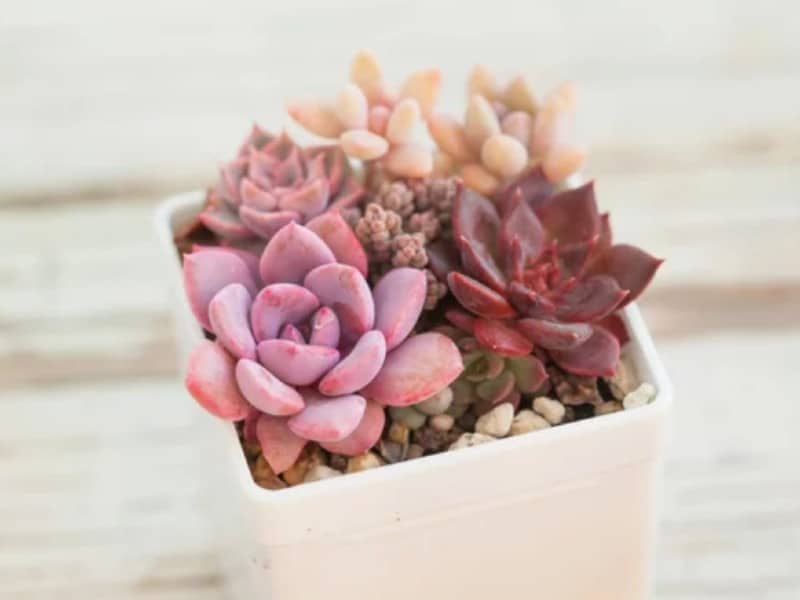
Buy it from:
If the normal variety of Graptoveria ‘Debbie’ isn’t exciting enough for you, check out the hybrid succulent from crossing this one to another species of Echeveria. If you can find the rarer cultivars of this succulent, you may be able to get your hands on a variegated or crested cultivar.
X Graptoveria ‘Topsy Debbi’
This hybrid is a cross between x Graptoveria ‘Debbi’ and Echeveria runyonii ‘Topsy Turvy’. It’s also sometimes referred to as Topsy Debbie, Lilac Spoons, or Cupid. Topsy Debbi combines the best of both parent plants.
It has the beautiful pastel colors of x Graptoveria ‘Debbi’ with the interesting leaf shape of E. runyonii ‘Topsy Turvy’. The name Lilac Spoons most closely describes this plant as the leaves are both lilac in color and spoon-shaped.
Like the parent plant, Topsy Debbi gets its soft, pastel color from the waxy epicuticular wax coating on the leaves. The color is also more vibrant in cooler temperatures. The exact shape of the leaf varies from plant to plant due to the inconsistencies in genetics.
x Graptoveria ‘Debbi Cristata’
In terms of leaf shape and color, this crested form of x Graptoveria ‘Debbie’ is identical to the original variety. However, its leaves are not arranged in the characteristic rosette pattern.
Instead, the stems of this form are fan-shaped, resulting in a mass of leaves sticking out at every angle. Though there can be an almost recognizable pattern to the leaves in some areas, in others they will be arranged more chaotically.
The crested form of this hybrid succulent is very difficult to find, but it is as easy to care for as the original variety.
x Graptoveria ‘Debbi Variegated’
As you can probably guess, this is the variegated form of x Graptoveria ‘Debbi’. The leaves are arranged in the classic rosette pattern but are a combination of the traditional pastel pinks and greens along with a yellowish-white.
The only difference between this form and the original is the color of the leaves. In terms of mature size and care, these plants are identical.
Caring for Graptoveria ‘Debbi’
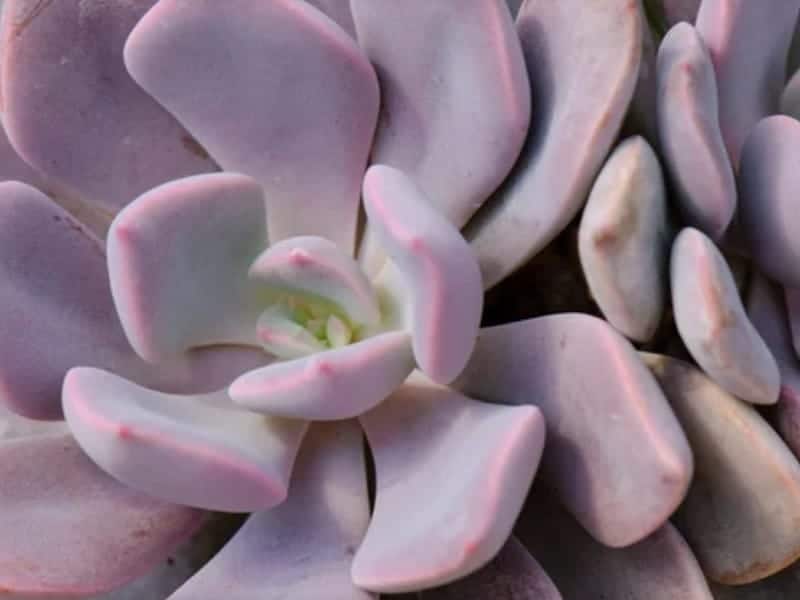
Graptopetalum and Echeveria are frequently considered to be some of the easiest succulents to care for, so it’s no surprise that a hybrid between the two is just as simple. Graptoveria are relatively low maintenance, but like most succulents, they prefer a more hands-off approach to care.
No products found.
Light
When grown indoors, Graptoveria ‘Debbi’ prefers bright light. This plant will thrive in your brightest window, so use a south-facing window if you have it. Otherwise, an east or west-facing window will work as well.
This is not a low-light environment plant, so if your indoor space is quite dim, you may need to provide your succulent with an additional light source such as a grow light. A high-quality, full-spectrum grow light will allow you to grow Graptoveria and other succulents in even the darkest areas of your home or office.
If you live in a climate that experiences mild winters, you might also consider growing your Debbi outdoors. If your summers are warm, you can always take the plant outdoors during the summer and bring it indoors to thrive in your brightest window until spring.
These succulents do best in full sun outdoors, but it’s important to use caution when putting your plants in direct sunlight. If your Graptoveria hasn’t been acclimated to full sun, it may burn unless you give it time to adjust.
To prevent sunburn, increase the amount of light your succulent gets slowly over a period of several weeks. A slow introductory period is essential in preventing sunburn, especially since sunburn damage cannot be repaired.
If you increase light levels too quickly, you may notice brown or black patches on the leaves of your Graptoveria. This discoloration is caused by sun damage, and you’ll need to reduce light levels immediately.
Sunburn is rarely deadly unless you leave the plant in direct sun for a prolonged period of time. If you can reduce the light, your Graptoveria will survive. However, you may need to trim away the burned areas if you find them unsightly.
Water
Graptoveria prefer the same watering technique loved by many other species of succulents: soak and dry. This method of watering involves soaking the soil so that it absorbs as much water as possible and then allowing it to completely dry out again.
Watering the plant again while the soil is still wet can lead to root rot, so it’s important to be careful and not overwater your succulent. To make sure the soil is dry before you water, use a soil moisture meter or your finger to test moisture levels a few inches below the surface of the soil.
If the soil feels moist, wait a few days before checking again. If the soil is dry, you can soak the soil with water and without worry.
Graptoveria are fairly drought tolerant, but if your succulent is in need of a drink, you may notice its leaves beginning to thin and shrivel.
On the other hand, if your Graptoveria has been overwatered, the leaves may take on a swollen, translucent appearance. They may become mushy or yellow and the bottom leaves may fall off.
In most cases, overwatering and underwatering won’t cause permanent damage, but it’s important to be aware of the signs of both.
You may also need to adjust your watering schedule based on the weather or the climate you live in. Hot, dry weather will mean more frequent watering, while cool or humid weather may mean you can go longer periods of time between watering.
Temperature
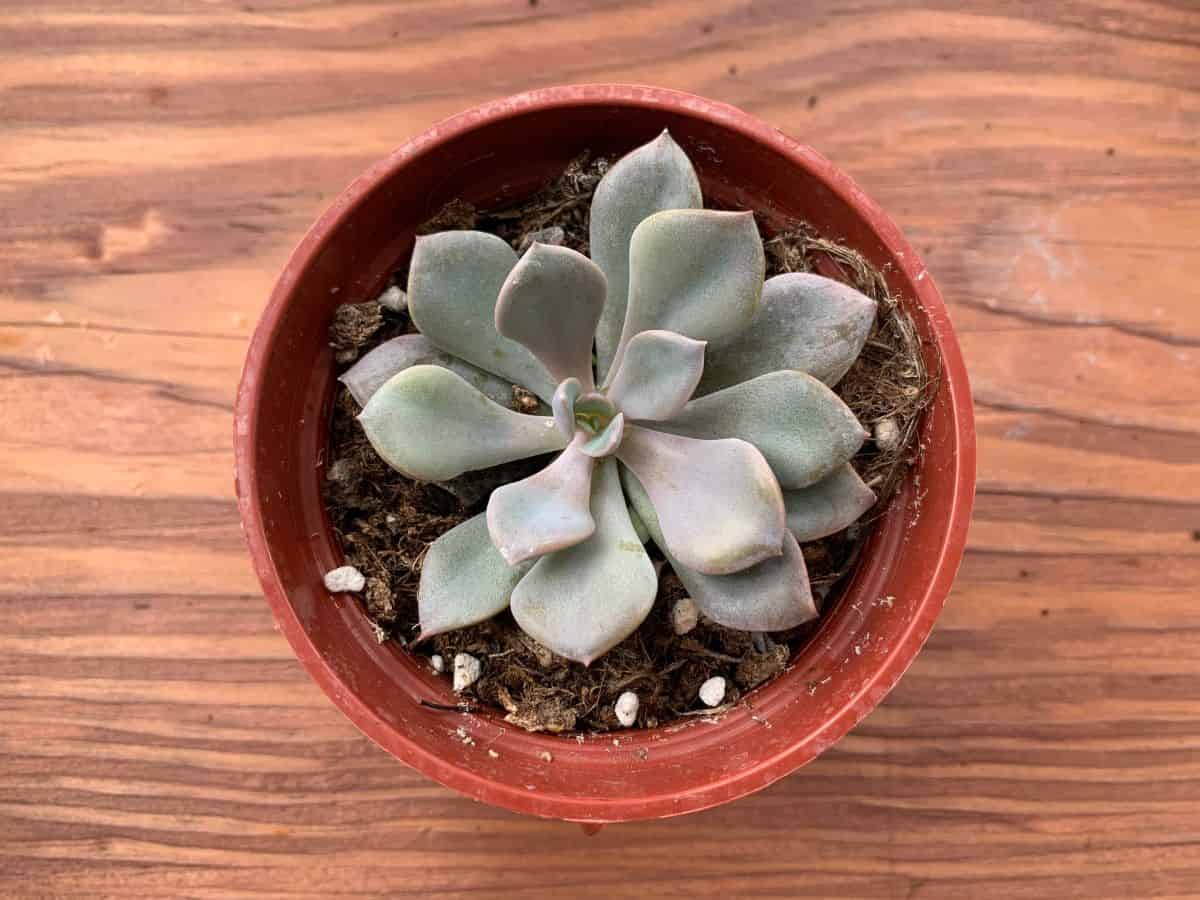
Graptoveria have the same temperature requirements as the parent plants. Unfortunately, none of these plants are frost tolerant so if your succulents are accidentally exposed to freezing temperatures, they may not survive.
Graptoveria ‘Debbi’ is not frost tolerant and will need to be brought indoors any time you see frigid temperatures in the forecast. For some, this may mean bringing the plant indoors until spring, for others it may just be a night or two.
Most gardeners with indoor succulent collections do not need to worry about temperature as most indoor spaces are warm enough for succulents to live comfortably. However, it is recommended to keep your Debbie away from any areas that experience sudden temperature changes, such as areas near doors to the outside or windows that are opened during winter.
Soil
Like other species of succulents, Graptoveria demands well-draining soil in order to thrive. Unless you plan on mixing your soil, you’ll need to look for a commercial soil formulated for succulents and cacti. Many brands of cactus soil can be used right out of the bag, but you can always mix in other ingredients if you want to alter it.
The ingredients you should be looking for in a soil, and adding if you choose to do so, should promote proper drainage and airflow around the roots. Larger mineral-based particles like coarse sand, gravel, perlite, or pumice are ideal.
Your Graptoveria would prefer to avoid soils with large amounts of water-retaining ingredients such as peat moss, clay, and coconut coir. Small amounts are generally tolerated, but if a large percentage of your soil retains water, you will need to worry about root rot.
Graptoveria are not fast-growing plants, so you won’t need to worry about repotting frequently. However, if your succulent has been in the same pot for some time and you’re worried about the quality of your soil you can fertilize it if you wish, but it isn’t necessary.
If you do choose to give your succulent plant food or fertilizer, just be sure to do so during the plant’s active growing season during the summer. It’s also recommended to dilute the product even if it says it’s fine without dilution, just to prevent accidental burning.
Container
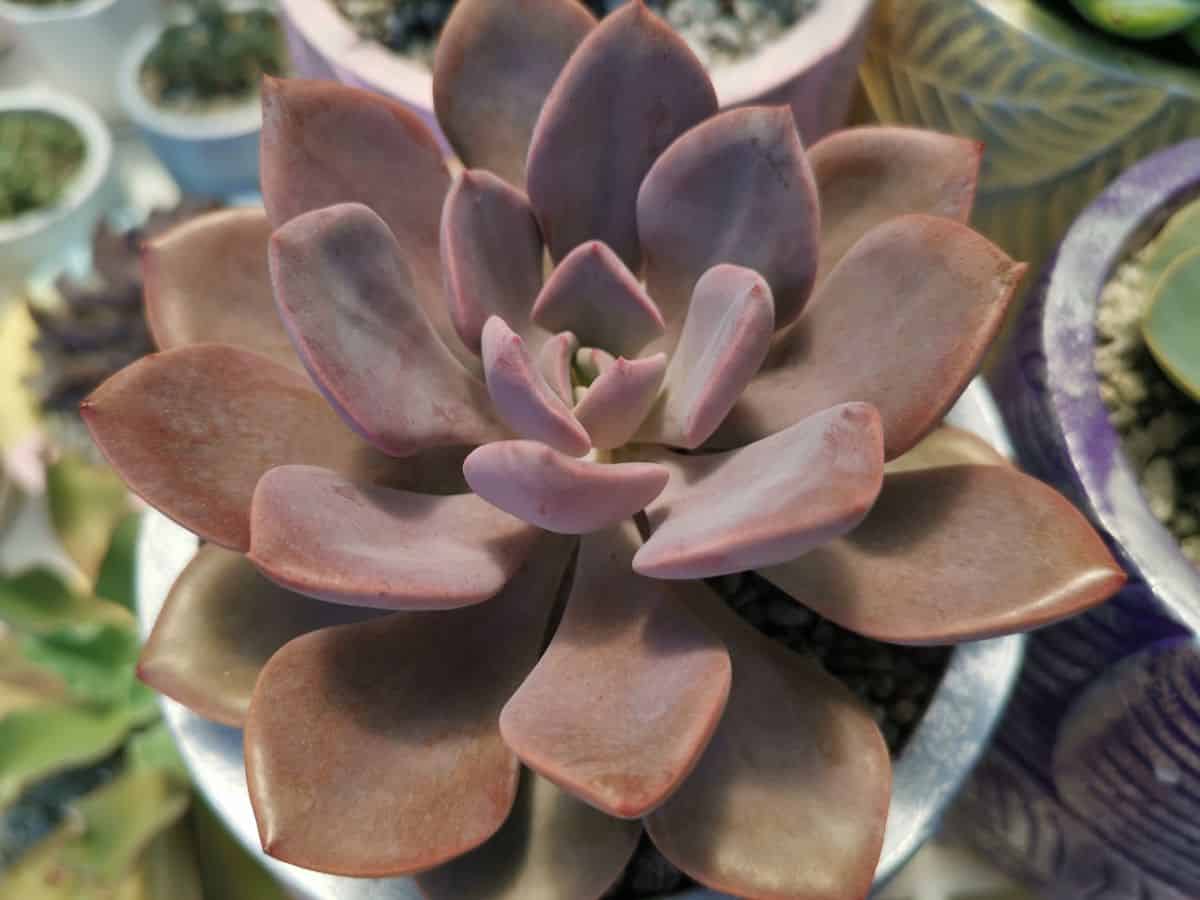
When choosing a container for your Graptoveria, you should prioritize drainage. While you can grow a succulent in a pot without drainage, you need to be incredibly precise in your watering habits to prevent accidental overwatering.
Most succulent gardeners would agree that it’s generally safer and easier to just use a pot with a drainage hole. Of course, if you’re the DIY type and have the necessary tools, you can always drill a hole into your favorite pot if it doesn’t already have one.
The material your pot is made of will also affect your watering habits, so it’s important to take this into account when making a decision.
Terracotta pots tend to absorb water from the soil, which can make the soil dry out more quickly. With succulents, this can be a good thing as it will help prevent accidental overwatering.
However, during particularly hot or dry seasons, you may find yourself watering your plants more frequently than if you had planted them in a plastic or glazed ceramic pot.
Propagating Graptoveria ‘Debbi’
One of the best characteristics of Graptoveria ‘Debbi’ is how easy it is to propagate. Whether you’re a succulent expert or have just started your succulent journey, this is a great plant to test your propagation skills.
There are three methods of Graptoveria propagation. Each method has its own pros and cons, so it’s up to you which method you use. Adventurous gardeners may want to try all three.
Offsets
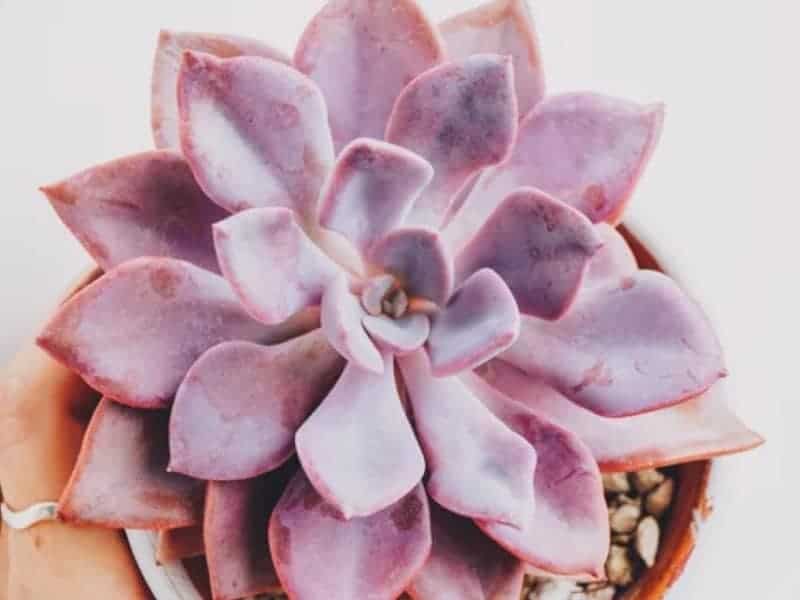
Separating offsets is by far the easiest method of propagation. Offsets, or pups, are the tiny plants that grow around the base of your mature Graptoveria. These mini succulents simply need to be separated from the mother plant and require little effort on your part to thrive.
Offsets can be separated using your fingers or a sharp knife. It may be helpful to brush away some of the topsoil so you can locate the root system and decide where to separate. It’s recommended to separate the offset as close to the mother plant as possible to retain the most roots.
Once you’ve separated the offsets, you’ll need to give them a few days in the open air to callous before planting. This helps reduce the chances of infection by fungus or bacteria and increases your chances of success.
After the wounds have calloused, you can plant the offsets in well-draining soil and treat it just as you would a mature Graptoveria. As you can see, this is by far the simplest method of adding new Graptoveria to your collection.
Cuttings
The second most popular method of Graptoveria propagation is using stem or leaf cuttings. Stem cuttings tend to result in a mature plant more quickly, but leaf cuttings don’t require you to take as much of the mature plant.
Stem cuttings are a great way to save an etiolated or sunburned plant. If you can remove the healthiest part of the plant, you can typically root it to save the plant without taking the damaged or stretched-out parts.
Leaf cuttings are a great way to take advantage of leaves knocked off during transplanting or handling. They’re also an easy way to take some of your mature plant without it being too obvious.
When taking cuttings, be sure to use sharp, sterile scissors or shears to ensure you make a clean cut. You should also choose only the healthiest parts of the plant for your cuttings.
Once you’ve collected your cuttings, you’ll need to give them a few days to callous, just as you would with offsets. The difference here is that your cuttings will need to develop roots rather than just being transplanted.
To accomplish this, you can dip your cuttings in a rooting hormone powder before planting, but this step isn’t required for success.
Place your cuttings on top of well-draining soil and water sparingly. In a few weeks, you should notice tiny roots sprouting from your cuttings. At this point, you can begin watering them more like a mature Graptoveria.
With any luck, your cuttings will soon develop into healthy, mature succulents. Don’t forget to share them with family and friends!
Seeds
The final method of Graptoveria propagation is also the least common. This is because it’s also the slowest method of propagation. Growing succulents from seeds can be time-consuming, but it can also be a fun experiment.
If you’re interested in collecting seeds from your existing Debbies, you can do so after they’ve bloomed. Otherwise, you’ll need to look for a reputable seed vendor that specializes in succulents and cacti.
Once you have Graptoveria ‘Debbi’ seeds in hand, you’re ready to plant. Use the same soil you’d use for a mature plant and sprinkle the seeds across the top of the soil. You can then sprinkle a bit of soil on top, but this isn’t required. Be sure not to bury the seeds too deeply.
You’ll want to keep the seeds moist, but not overly wet so consider covering the soil with a plastic or glass sheet or lid. If the soil is overly wet, the seeds could rot, so it’s best to keep it just damp.
After a few days or weeks, you should see tiny Graptoveria seedlings sprouting from the soil’s surface. At this point, you can remove the cover from the soil and begin to treat them more like mature succulents.
Graptoveria are slow-growing succulents, so it may be many months before your seedlings are of a sturdy enough size to withstand transplanting. You’ll need to use your best judgment to decide when to move your tiny succulents to their own containers.


